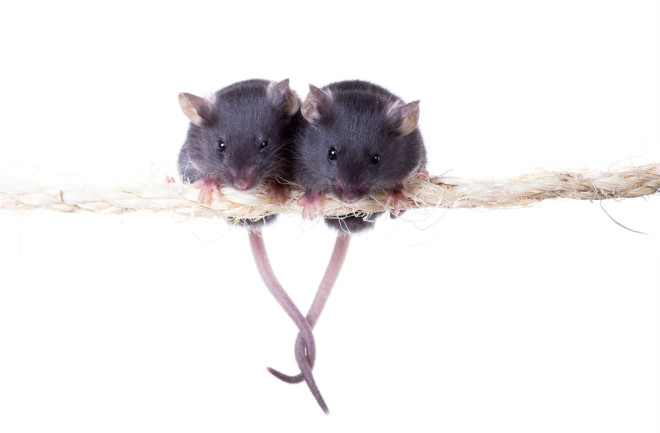A new breakthrough in egg cell creation has enabled a female mouse to give birth to babies carrying only the genes of two fathers.
Scientists genetically engineered this by turning male XY chromosomes into female XX chromosomes and creating eggs from strictly male skin cells.
“The mice look fine — they grew up to be adults, and the adult mice are also fertile,” says Katsuhiko Hayashi, a genome biologist at Osaka University in Japan.
The achievement has huge implications for same-sex parenting, and for treating or preventing sexual chromosome disorders such as infertility and Down syndrome.
“It was surprising — I’m happy to get these results,” Hayashi says.
Genetically Modified Mice
Hayashi and his colleagues have been working on this technique for 12 years. It basically involves creating a stem cell from a somatic cell.
In multicellular organisms, somatic cells are any kind other than reproductive cells. Using a technique developed by Nobel Prize laureate Shinya Yamanaka, Hayashi’s team has introduced genes into somatic cells to turn them into pluripotent stem cells, a type of cell that can stand in for an embryonic cell.
In a March study published in Nature, the team describes how they used this technique to convert an XY male chromosome into an XX female chromosome in mice.
Altering Mice Chromosomes
In basic terms, they took the chromosomes from the tail tip of one male mouse, changed them into a female chromosome, then added them to another male’s chromosomes.
They still needed a female mouse to carry the eggs they created and give birth, but the basic chromosomes didn’t come from the surrogate female.
Using this technique, the team implanted embryos in surrogate females, which then gave birth to seven healthy babies — six males and one female. It was, however, a low success rate overall.
Only 1.1 percent of the 630 mice implanted with embryos survived.
But these seven survivors also became fertile themselves — both the male and female offspring have had their own babies, Hayashi says.
Read More: How Stress, Climate and Trauma Can Trigger Sex Changes in Nature
Implications for Down Syndrome
Since the technique can change chromosomes, it can also repair potential issues.
One condition that could be affected is Down syndrome or trisomy 21, which occurs when a person carries an extra copy (partial or complete) of chromosome 21. (Most humans carry exactly two copies of 23 chromosomes that make up their genome).
Mice chromosomes aren’t exactly the same, but some mice, as well as humans, carry a disorder called trisomy 16, which can lead to the death of the impacted fetus or developmental problems after birth.
Hayashi’s technique also eradicated the trisomy 16 issue in mice.
Since trisomy 16 has been used as a model of Down syndrome in humans, it’s possible that this technique could be further developed to help prevent this condition.
Addressing Infertility
It could also help to repair infertility in cases where the issue involves too many Y chromosomes or the loss of an X chromosome.
If further developed, same-sex couples could have babies that carry both of their genes. “[This study] opens the possibility of bipaternal reproduction,” the authors say in the study.
Read More: My Long and Arduous Journey Across the Frontiers of Fertility Technology
Helping With Conservation
The breakthrough also has implications for conservation of endangered species.
In the future, this technique could be expanded to help in cases where few individuals of a species remain.
For example, there are only two northern white rhinoceros left in the world, and both are female. Wildlife researcher Thomas Hildebrandt told CNN that this technique might help the breeding program for these specific animals.
Risks of Genetic Engineering
Of course, this experiment was only conducted on mice, and would need a lot of work before anybody used a similar technique on humans.
“At least we are sure that it’s a possibility by using experimental animals,” Hayashi says.
Similar to the development of human cloning, there are also some ethical issues to consider.
Hayashi says that societies will need to have conversations on the ethics about making changes to these basic building blocks of biology before anything like this is attempted on humans.
Read More: Sperm Counts Are on the Decline. Is the Human Race in Danger?

